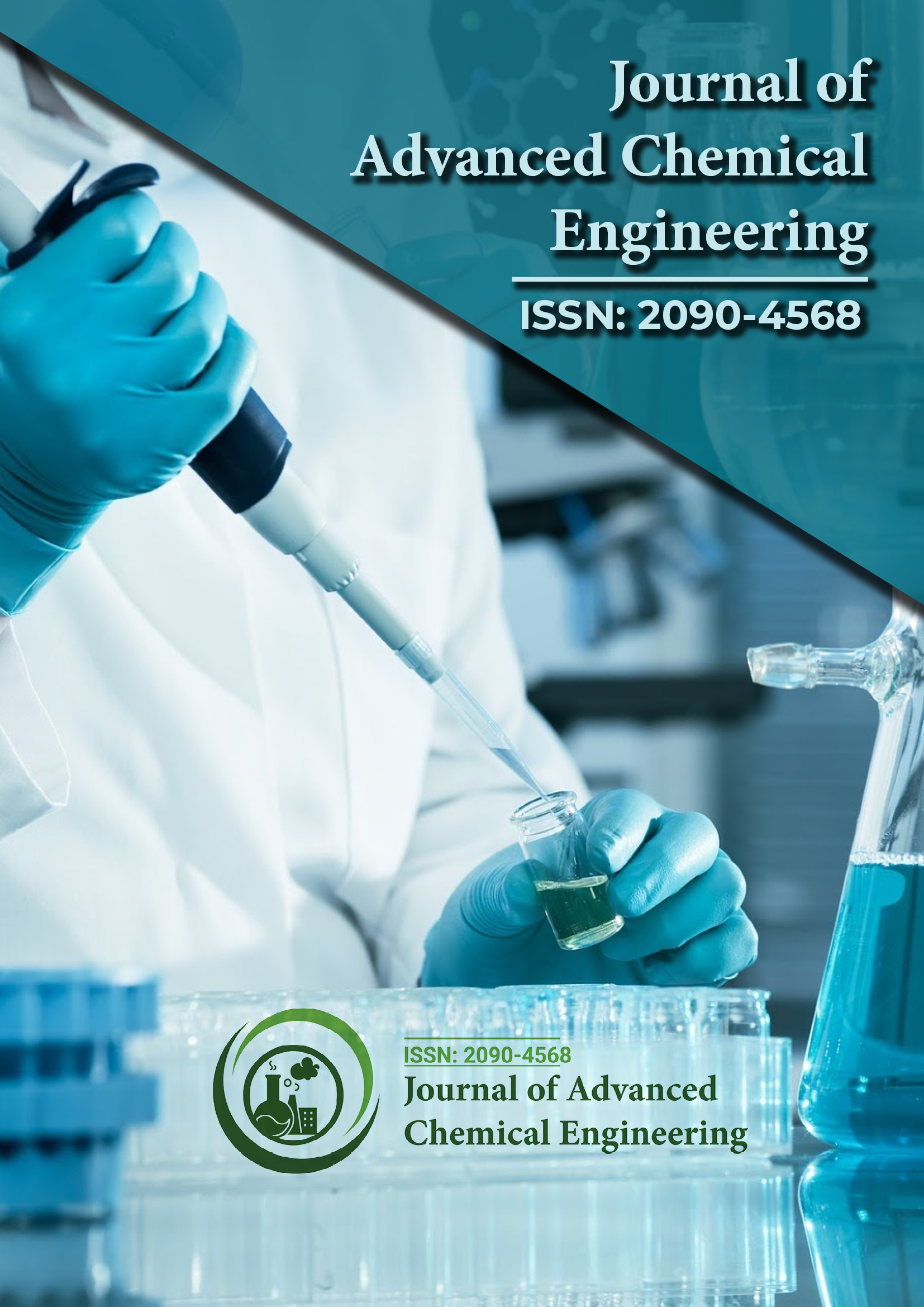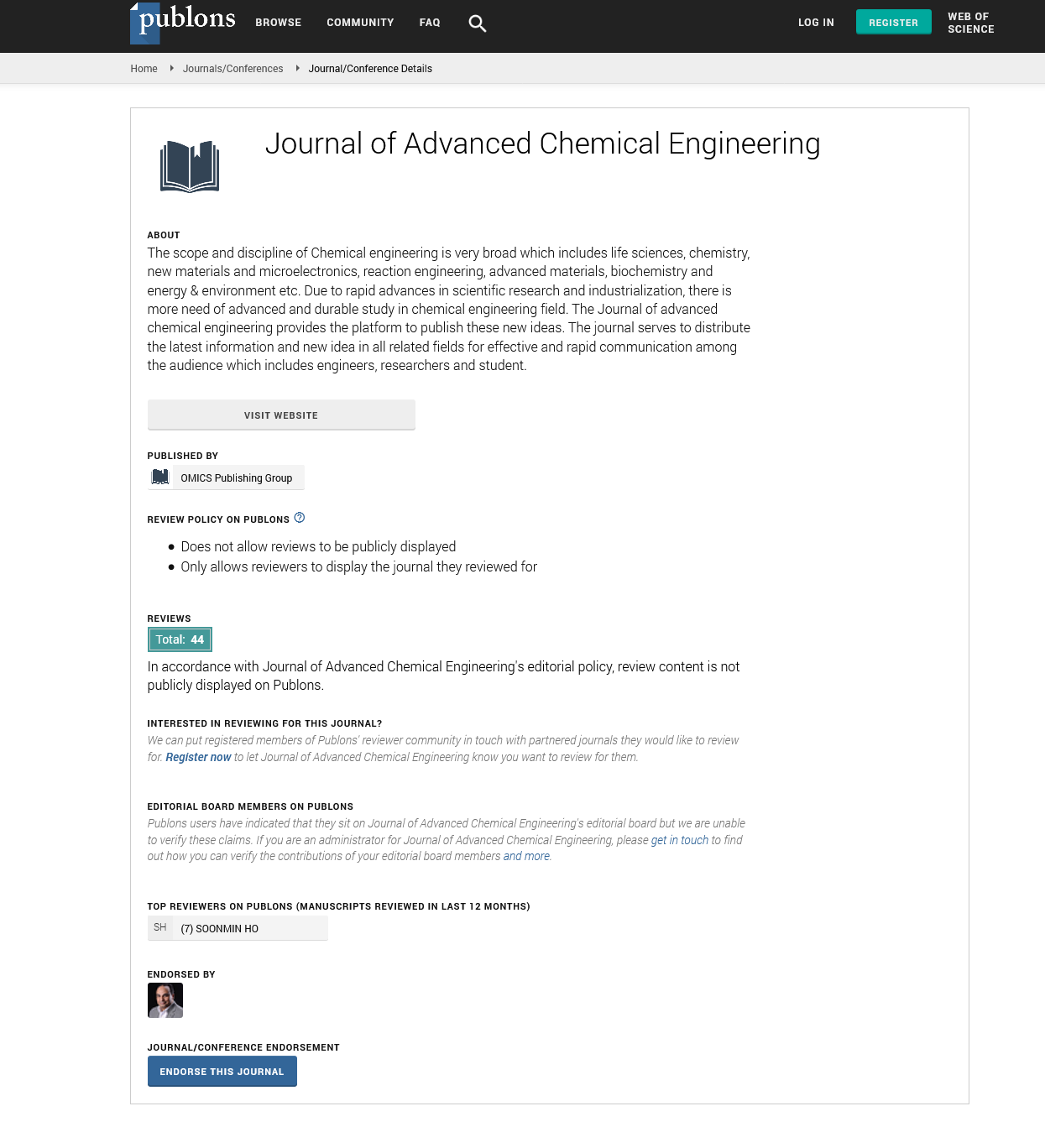Indexed In
- Open J Gate
- Genamics JournalSeek
- Smithers Rapra
- RefSeek
- Directory of Research Journal Indexing (DRJI)
- Hamdard University
- EBSCO A-Z
- OCLC- WorldCat
- Scholarsteer
- Publons
- Geneva Foundation for Medical Education and Research
- Google Scholar
Useful Links
Share This Page
Journal Flyer

Open Access Journals
- Agri and Aquaculture
- Biochemistry
- Bioinformatics & Systems Biology
- Business & Management
- Chemistry
- Clinical Sciences
- Engineering
- Food & Nutrition
- General Science
- Genetics & Molecular Biology
- Immunology & Microbiology
- Medical Sciences
- Neuroscience & Psychology
- Nursing & Health Care
- Pharmaceutical Sciences
Opinion Article - (2025) Volume 15, Issue 1
Artificial Intelligence in Chemical Process Optimization: Bridging Data and Reaction Engineering
Leon Yamamoto*Received: 03-Mar-2025, Manuscript No. ACE-25-29156; Editor assigned: 05-Mar-2025, Pre QC No. ACE-25-29156 (PQ); Reviewed: 19-Mar-2025, QC No. ACE-25-29156; Revised: 26-Mar-2025, Manuscript No. ACE-25-29156 (R); Published: 02-Apr-2025, DOI: 10.35248/2090-4568.25.15.360
Description
The integration of Artificial Intelligence (AI) into chemical engineering marks a paradigm shift in how chemical processes are designed, optimized, and controlled. As the industry grapples with the demands of higher efficiency, lower emissions, and tighter process specifications, AI offers a powerful toolkit to handle complex multivariable systems, reduce experimental burden, and uncover hidden patterns in vast datasets. Particularly in reaction engineering, AI is enabling predictive modeling, real-time monitoring, and automated decisionmaking, pushing the boundaries of traditional process design and operation.
At the heart of AI's contribution to chemical engineering is Machine Learning (ML), a subset of AI that builds models capable of learning from data. In chemical synthesis, for instance, ML algorithms can analyze experimental results from high-throughput screening to identify optimal reaction conditions temperature, pressure, catalyst, solvent without exhaustive trial-and-error. Techniques such as decision trees, support vector machines, and neural networks are being applied to predict reaction yields, selectivities, and even kinetic parameters with impressive accuracy. These capabilities significantly reduce the time and cost associated with process development.
One of the most transformative uses of AI is in the optimization of catalytic processes. Catalysts, especially in heterogeneous systems, exhibit performance that depends on a complex interplay of physicochemical properties. AI models can correlate catalyst descriptors such as surface area, pore size distribution, metal dispersion, and acidity with performance metrics, guiding the design of improved catalysts through data-driven insights. Combined with Density Functional Theory (DFT) calculations and material informatics, AI accelerates catalyst discovery and scaling from bench to plant.
In continuous processes such as distillation, fluidized bed reactors, or membrane separations, AI is being employed for process control and fault detection. Using historical data and sensor inputs, AI systems can predict deviations, optimize control parameters in real time, and maintain product quality. Reinforcement learning, a technique where algorithms learn through trial and feedback, is particularly effective in dynamic environments where the process behavior changes over time or under different operational loads.
Digital twins—virtual replicas of chemical plants are a growing application of AI in process systems engineering. These models simulate physical processes using both first-principle equations and machine-learned components, enabling safe, cost-effective testing of control strategies, scale-up conditions, or equipment changes. By integrating with the industrial Internet of Things (IIoT), digital twins allow remote monitoring and predictive maintenance, reducing unplanned downtime and enhancing process safety.
AI is also playing a critical role in sustainable process design. Life Cycle Assessment (LCA), a complex methodology used to evaluate the environmental impact of processes, can be enhanced through AI-based classification and regression models. These tools can rapidly evaluate the sustainability profile of different process configurations, feedstocks, or waste treatment options, enabling greener decision-making from the early design stages.
In biochemical engineering and pharmaceuticals, AI is helping decode biological complexity to optimize fermentation, biocatalysis, and cell culture processes. Predictive models trained on omics data (genomics, proteomics, metabolomics) allow targeted strain improvement and efficient scale-up of bioprocesses. This integration is particularly valuable in the development of biosimilars and personalized medicine, where understanding the variability in biological systems is crucial.
Despite these advantages, challenges persist. A major issue is data quality and availability. Many chemical processes operate in proprietary or fragmented systems, where data is not standardized or consistently recorded. This hinders the development of robust AI models. Efforts are being made to develop standardized data ontologies and open-access chemical databases to support AI applications. In parallel, hybrid modeling approaches that combine mechanistic models with machine learning are gaining traction, offering both physical interpretability and predictive power.
Model interpretability is another concern, especially in safetycritical industries like chemical manufacturing. While deep learning models can achieve high accuracy, they often function as black boxes, making it difficult to understand the rationale behind predictions. Explainable AI (XAI) is emerging as a solution, offering tools that elucidate which features influence the model outputs and how decisions are made, thereby increasing trust in AI systems.
Citation: Yamamoto L (2025). Artificial Intelligence in Chemical Process Optimization: Bridging Data and Reaction Engineering. Adv Chem Eng. 15:360.
Copyright: © 2025 Yamamoto L. This is an open-access article distributed under the terms of the Creative Commons Attribution License, which permits unrestricted use, distribution, and reproduction in any medium, provided the original author and source are credited.

